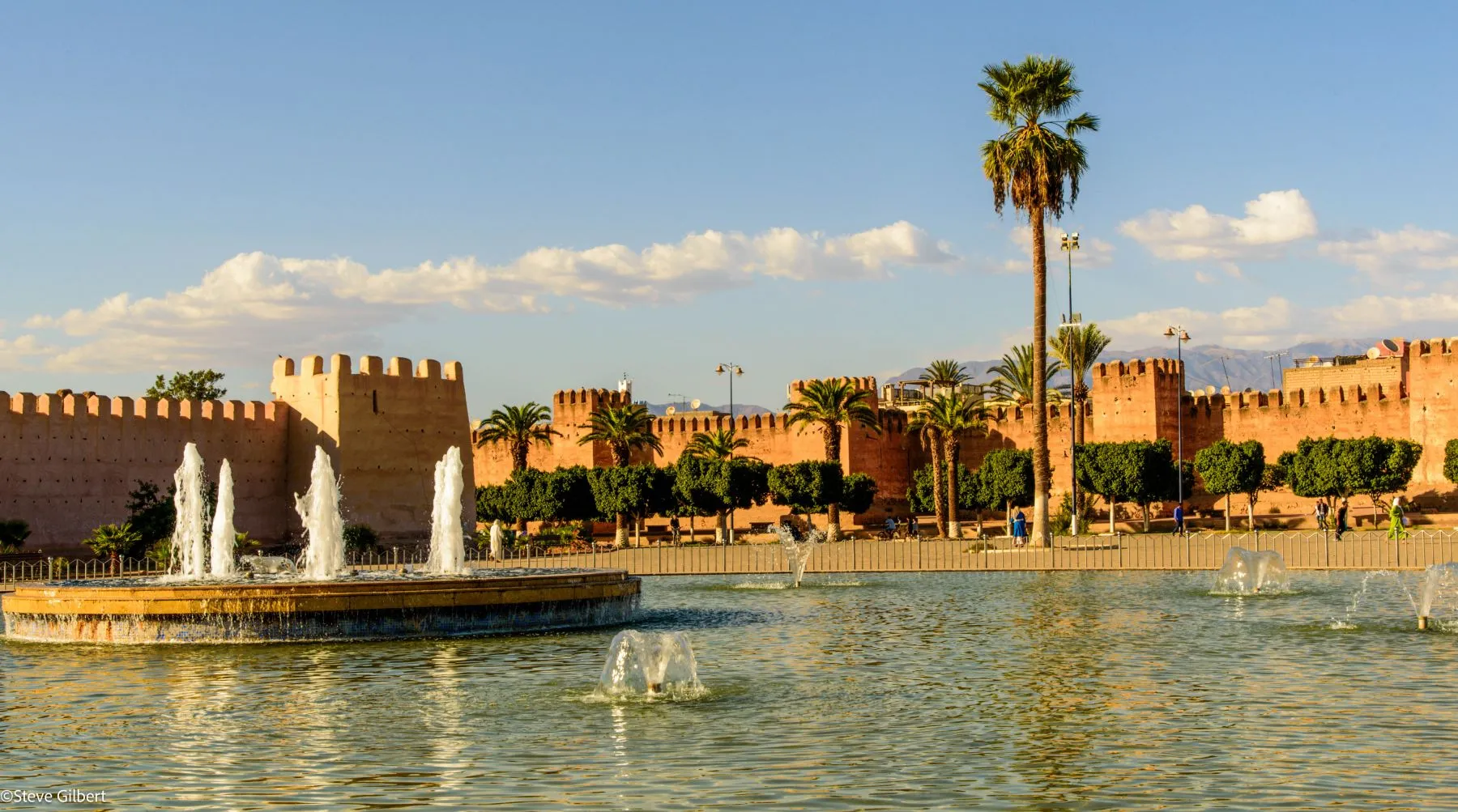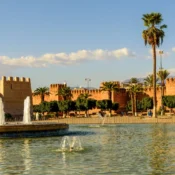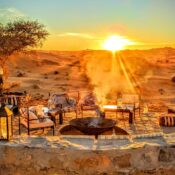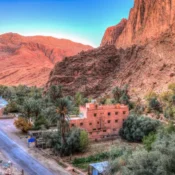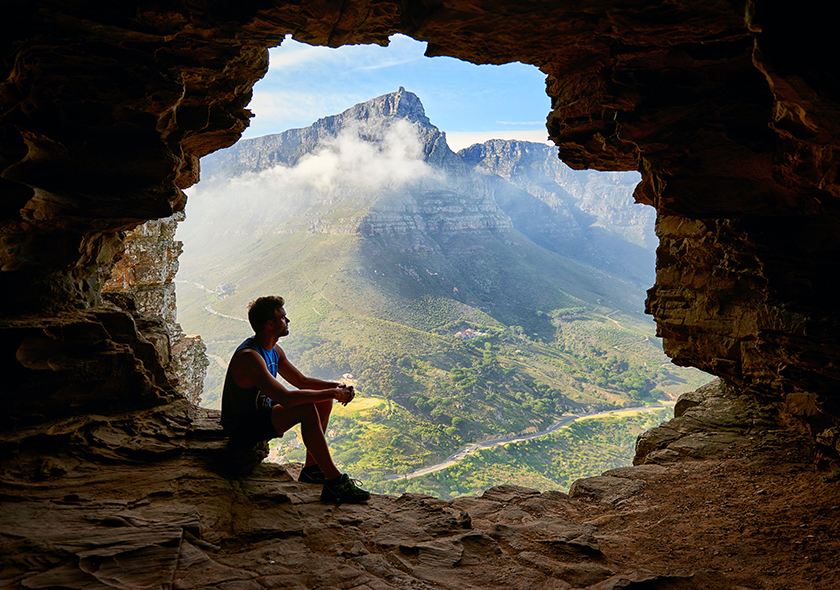Morocco is a land of enchanting landscapes, vibrant cultures, and rich history, making it a top destination for travelers seeking unique experiences. From the bustling souks of Marrakech to the tranquil sands of the Sahara Desert, Moroccan tours offer a myriad of adventures. Whether you’re interested in exploring ancient cities, hiking through mountain ranges, or simply enjoying the local cuisine, there’s something for everyone in Morocco. In this article, we’ll delve into the best experiences and tips for making the most of your Moroccan tour. Welcome to Your Tour Morocco, where your ultimate adventure begins.
1. Why Choose Moroccan Tours?
Moroccan tours offer a diverse array of experiences, from exploring ancient cities to traversing vast deserts. One of the primary reasons to choose Moroccan tours is the rich cultural heritage that permeates every aspect of the country. The medinas, mosques, and palaces are not just historical sites but living parts of Moroccan daily life. Additionally, Morocco’s diverse landscapes—from the rugged Atlas Mountains to the serene Atlantic coastline—provide a backdrop for countless outdoor activities and adventures.
Moreover, Moroccan hospitality is renowned worldwide. You’ll find locals welcoming you with open arms and a cup of mint tea, eager to share their culture and traditions. This hospitality extends to the country’s tourism industry, where tour operators are committed to providing authentic and enriching experiences. By choosing Moroccan tours, you’re not just visiting a new place; you’re immersing yourself in a different way of life.
2. Best Time to Visit Morocco
Choosing the best time to visit Morocco can significantly enhance your tour experience. Morocco enjoys a Mediterranean climate along the coast and a desert climate inland, leading to varied weather conditions. The ideal time for Moroccan tours largely depends on the activities you plan to engage in.
Spring (March to May) and fall (September to November) are considered the best times to visit Morocco. During these seasons, the weather is mild and pleasant, making it ideal for sightseeing and outdoor activities. The summer months (June to August) can be extremely hot, especially in inland areas like Marrakech and the Sahara Desert. However, the coastal cities like Casablanca and Essaouira remain relatively cooler and enjoyable.
If you’re interested in skiing or snow activities, the winter months (December to February) are perfect for visiting the Atlas Mountains. The summer heat can be a deterrent for some, but it’s also a great time to explore the cooler regions of the Rif Mountains and the Atlantic coast. Understanding these seasonal variations will help you plan your tour to make the most of Morocco’s diverse offerings.
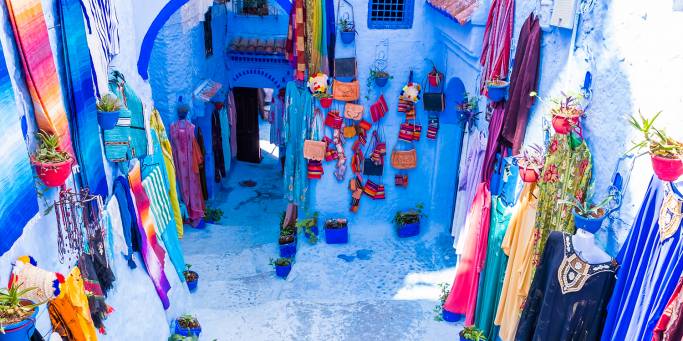
3. Must-Visit Cities on Morocco Tours
Morocco’s cities are a blend of ancient traditions and modern influences, each offering its own unique charm. Marrakech, often referred to as the “Red City” due to its ochre-colored buildings, is a vibrant hub of activity. The city’s medina is a UNESCO World Heritage site, filled with bustling souks, historic palaces, and beautiful gardens. Don’t miss the chance to visit Jemaa el-Fnaa, the main square, which comes alive with storytellers, musicians, and food stalls at night.
Fez, the spiritual capital of Morocco, is home to the world’s oldest university, the University of Al Quaraouiyine. Its medina is a labyrinth of narrow streets, filled with mosques, madrasas, and artisan workshops. The city is a living museum, offering a glimpse into Morocco’s rich cultural and intellectual heritage.
Casablanca, the country’s economic capital, showcases a blend of modern and traditional architecture. The Hassan II Mosque, one of the largest mosques in the world, is a must-visit. Rabat, the coastal capital, offers a more laid-back experience with its historic kasbahs and beautiful coastal views.
Chefchaouen, known as the “Blue Pearl,” is famous for its blue-painted streets and buildings. Nestled in the Rif Mountains, it offers a tranquil escape and stunning natural scenery. Each of these cities offers unique experiences, making them essential stops on any Moroccan tour.
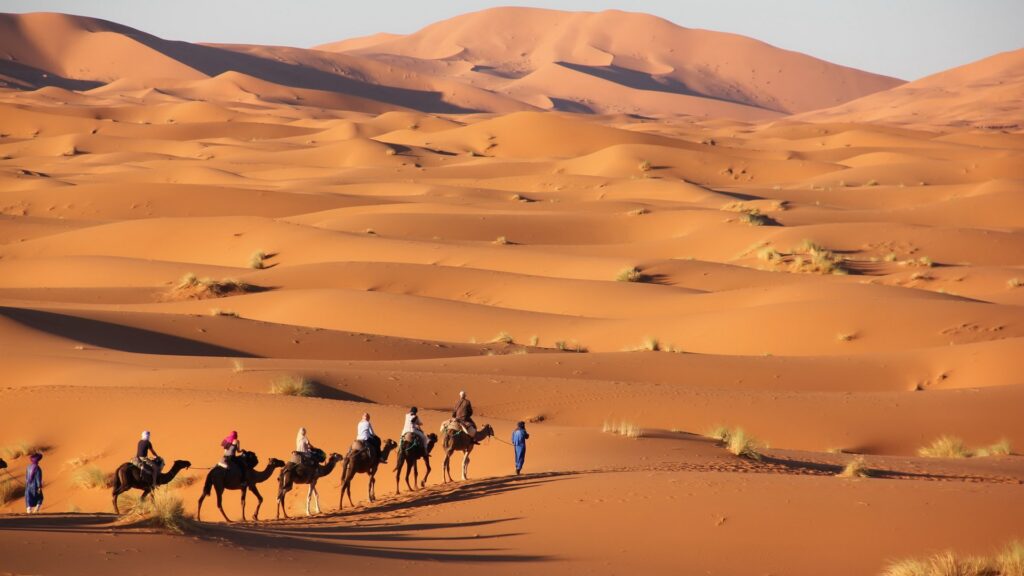
4. Exploring the Moroccan Desert
The Moroccan desert is an iconic destination, offering unforgettable adventures and breathtaking landscapes. The Sahara Desert, with its towering sand dunes and star-filled night skies, is a must-visit. Erg Chebbi and Erg Chigaga are two of the most popular dune areas. Erg Chebbi, near the town of Merzouga, is known for its towering dunes that can reach up to 150 meters. Erg Chigaga, further off the beaten path, offers a more remote and rugged desert experience.
One of the best ways to experience the desert is through a camel trekking adventure. Riding a camel through the golden sands is a surreal experience, reminiscent of ancient caravans that once crossed these vast landscapes. Many tours include overnight stays in traditional Berber tents, allowing you to experience the tranquility and beauty of the desert at night.
For those seeking more luxury, there are desert camps that offer comfortable accommodations with all the amenities of a high-end hotel. These luxury camps provide gourmet meals, private tents with en-suite bathrooms, and guided activities like dune boarding and 4×4 excursions.
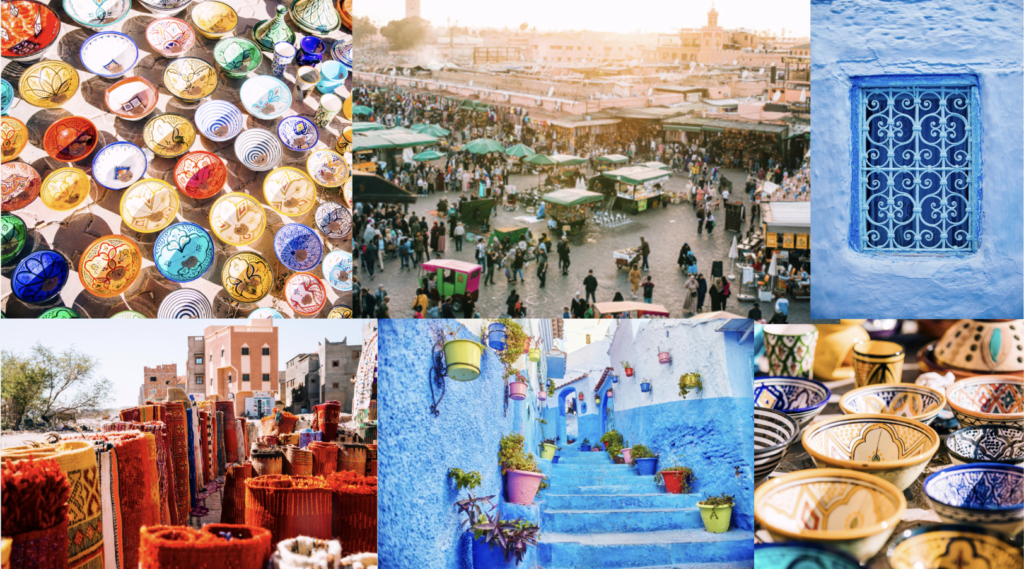
5. The Imperial Cities Tour
Discover Morocco’s rich history and imperial grandeur by touring its famous imperial cities. Rabat, Meknes, Fez, and Marrakech are collectively known as the imperial cities, each having served as the capital of Morocco at different points in history. These cities are treasure troves of historical and architectural wonders.
Rabat, the current capital, features the majestic Hassan Tower and the beautiful Mausoleum of Mohammed V. The city’s medina and the Kasbah of the Udayas offer a blend of Andalusian and Moroccan architecture, reflecting its rich history.
Meknes, often overshadowed by its more famous neighbors, boasts impressive gates and palaces. The city was the capital under Sultan Moulay Ismail, who transformed it with grand buildings and extensive fortifications. The Bab Mansour gate is one of the most striking examples of Moroccan architecture.
Fez, known for its medieval medina, offers a journey back in time. The city is home to the University of Al Quaraouiyine, the oldest continuously operating university in the world. The Bou Inania Madrasa and the Al-Attarine Madrasa are architectural masterpieces, showcasing intricate tilework and woodcarvings.
Marrakech, the jewel of Moroccan tourism, is famous for its vibrant souks, palaces, and gardens. The Koutoubia Mosque, Saadian Tombs, and Bahia Palace are must-see attractions. The city’s medina is a UNESCO World Heritage site, offering a sensory overload of sights, sounds, and smells.
6. Coastal and Beach Tours
Morocco’s coastline offers stunning beaches and charming coastal towns, perfect for a relaxing getaway. Essaouira, known as the “Wind City,” is a favorite among windsurfers and kitesurfers. Its medina is a UNESCO World Heritage site, with narrow streets filled with art galleries, boutiques, and seafood restaurants. The city’s relaxed atmosphere and stunning Atlantic views make it a perfect coastal escape.
Agadir, a modern beach resort city, offers long sandy beaches and a range of water sports. The city was rebuilt after a devastating earthquake in 1960, resulting in a blend of modern architecture and traditional Moroccan elements. Agadir’s beach promenade is lined with cafes and restaurants, making it a great place to unwind.
Asilah, a small artistic haven on the northern coast, is known for its annual arts festival and beautifully painted murals. The town’s medina is a peaceful retreat, with whitewashed houses and narrow streets. Asilah’s beaches are less crowded, offering a serene escape from the hustle and bustle of larger cities.
7. Mountain Adventures in Morocco
The mountains of Morocco provide thrilling adventures and stunning scenery for nature lovers. The Atlas Mountains, stretching across the country, offer numerous hiking and trekking opportunities. The High Atlas range, home to North Africa’s highest peak, Mount Toubkal, is a popular destination for trekkers. The climb to the summit is challenging but rewarding, offering breathtaking views of the surrounding landscapes.
The Middle Atlas, known for its cedar forests and charming Berber villages, is a great destination for day hikes and cultural experiences. Ifrane, a town in the Middle Atlas, is often referred to as “Little Switzerland” due to its European-style architecture and lush surroundings.
The Rif Mountains, in northern Morocco, offer a different kind of adventure. The town of Chefchaouen, nestled in the Rif, is a great base for exploring the region. The mountains are known for their scenic beauty and opportunities for hiking and birdwatching.
8. Cultural Experiences and Festivals
Immersing yourself in Moroccan culture is an essential part of any tour, with vibrant festivals and traditional experiences. Morocco’s festivals are a celebration of its rich cultural heritage, offering a glimpse into the country’s traditions and customs. The Mawazine Festival, held in Rabat, is one of the largest music festivals in Africa, featuring international and local artists.
The Gnaoua World Music Festival in Essaouira celebrates the traditional music of the Gnaoua people, combining it with contemporary genres. The festival attracts musicians and visitors from around the world, creating a unique cultural exchange.
Traditional Moroccan music and dance are integral parts of the country’s cultural fabric. The rhythmic beats of the darbuka drum, the soulful melodies of the oud, and the energetic movements of the Moroccan dance all reflect the country’s diverse cultural influences.
Local crafts and markets are another way to experience Moroccan culture. The souks, or traditional markets, are filled with artisans selling handmade goods such as pottery, textiles, jewelry, and leather products. Visiting these markets provides a chance to interact with local craftsmen and learn about traditional Moroccan craftsmanship.
9. Moroccan Cuisine and Culinary Tours
Moroccan cuisine is a feast for the senses, with rich flavors and aromatic spices that define its dishes. One of the best ways to experience Moroccan culture is through its food. Tagine, a slow-cooked stew made with meat, vegetables, and spices, is a staple of Moroccan cuisine. The dish is named after the earthenware pot in which it is cooked, which helps retain the flavors and moisture.
Couscous, often served with vegetables and meat, is another iconic Moroccan dish. The fine grains of semolina are steamed to perfection and combined with a variety of ingredients, creating a hearty and flavorful meal. Pastilla, a savory-sweet pastry filled with pigeon or chicken, almonds, and spices, is a must-try delicacy.
Culinary tours and cooking classes offer a hands-on way to learn about Moroccan cuisine. Many tours include visits to local markets to source fresh ingredients, followed by a cooking class where you can learn to prepare traditional dishes. These experiences provide insight into the techniques and traditions that make Moroccan cuisine so unique.
Food markets and street food are also integral parts of the Moroccan culinary scene. The food stalls in Jemaa el-Fnaa, Marrakech’s main square, offer a variety of traditional dishes, from grilled meats to savory pastries. Exploring these markets and trying the street food is an adventure in itself, offering a taste of Morocco’s diverse culinary heritage.
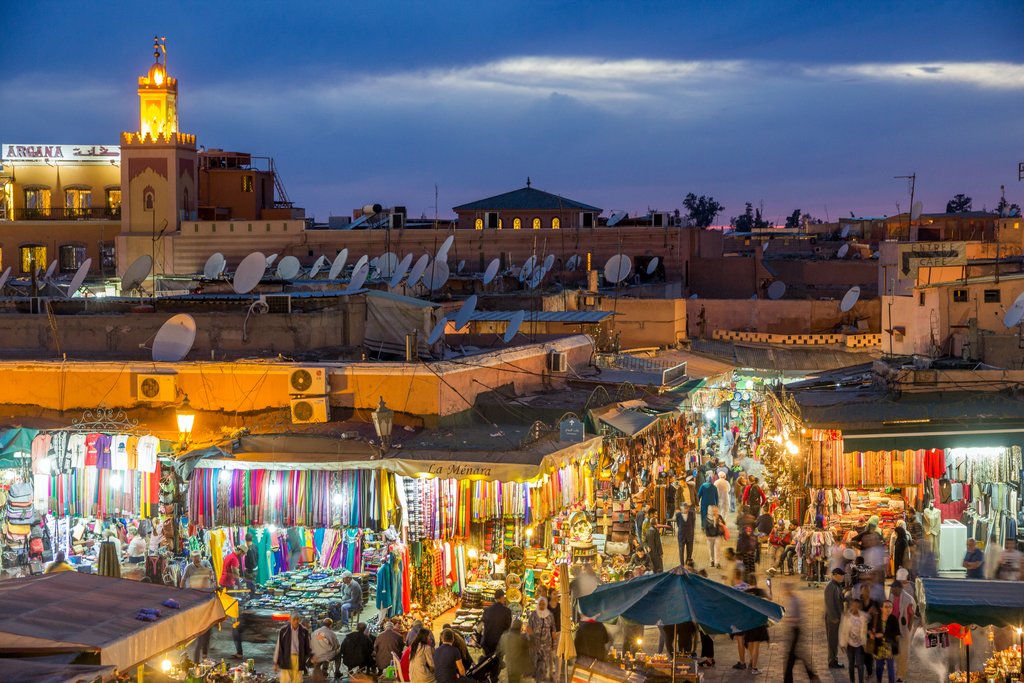
10. Tips for Booking Moroccan Tours
Planning and booking your Moroccan tour carefully can ensure a smooth and enjoyable experience. Choosing the right tour operator is crucial. Look for operators with good reviews and a reputation for providing high-quality, authentic experiences. It’s also important to check that the tour operator is licensed and insured.
Customizing your tour itinerary can help you make the most of your time in Morocco. Consider your interests and preferences when planning your itinerary. Whether you’re interested in history, adventure, or relaxation, there’s a Moroccan tour that can cater to your needs.
When booking your tour, be sure to ask about what’s included in the package. Some tours include accommodations, meals, and transportation, while others may only cover certain aspects. Understanding what is included will help you budget and plan accordingly.
Essential travel tips and advice can make your trip more enjoyable. Be sure to pack appropriate clothing for the weather and cultural norms. Morocco is a predominantly Muslim country, and dressing modestly is appreciated. Also, be prepared for different payment methods, as cash is often preferred in markets and smaller establishments.
11. Sustainable and Responsible Tourism
Embracing sustainable and responsible tourism practices helps preserve Morocco’s natural and cultural heritage. Eco-friendly tour options are becoming increasingly popular, offering experiences that minimize environmental impact and support local communities.
Supporting local communities is a key aspect of responsible tourism. Choosing locally-owned accommodations, restaurants, and tour operators helps ensure that your tourism dollars benefit the local economy. Many tour operators also offer community-based tourism experiences, where you can learn about and contribute to local conservation and development efforts.
Environmental conservation efforts are crucial in protecting Morocco’s diverse ecosystems. Many tour operators are committed to minimizing their environmental footprint by using sustainable practices such as reducing waste, conserving water, and using renewable energy sources. By choosing eco-friendly tours, you can enjoy Morocco’s natural beauty while helping to protect it for future generations.
12. Off-the-Beaten-Path Destinations
Venture beyond the typical tourist trails to discover Morocco’s hidden gems and lesser-known treasures. While cities like Marrakech and Fez are popular tourist destinations, there are many other places in Morocco that offer unique and enriching experiences.
Hidden villages and rural areas provide a glimpse into traditional Moroccan life. The village of Imlil in the Atlas Mountains is a great starting point for treks to Mount Toubkal, North Africa’s highest peak. The village of Aït Benhaddou, a UNESCO World Heritage site, is famous for its well-preserved kasbahs and has been featured in many films and TV shows.
Unique natural sites such as the Ouzoud Waterfalls and the Todra Gorge offer stunning scenery and outdoor activities. The Ouzoud Waterfalls, located in the Middle Atlas, are the highest waterfalls in Morocco and a popular spot for hiking and picnicking. The Todra Gorge, with its towering limestone cliffs, is a favorite among rock climbers and adventure seekers.
Cultural and historical sites off the beaten path, such as the Roman ruins of Volubilis and the ancient city of Tetouan, offer rich historical insights. Volubilis, a UNESCO World Heritage site, is one of the best-preserved Roman ruins in North Africa. Tetouan, with its Andalusian architecture and vibrant medina, offers a unique blend of Moroccan and Spanish influences.
13. Adventure Tours and Activities
For thrill-seekers, Morocco offers a variety of adventure tours and activities that promise excitement and adrenaline. Quad biking and dune bashing in the Sahara Desert are popular activities that allow you to explore the vast sand dunes at high speeds. These tours often include stops at traditional Berber villages, where you can learn about the local culture and way of life.
Rock climbing and canyoning are popular activities in the Todra Gorge and the Dades Valley. The towering limestone cliffs and deep canyons provide a challenging and exhilarating experience for climbers and adventurers. Guided tours are available for both beginners and experienced climbers, ensuring a safe and enjoyable experience.
Surfing and kiteboarding are popular along Morocco’s Atlantic coast. Essaouira and Agadir are two of the top spots for water sports, offering consistent waves and favorable wind conditions. Many surf schools and rental shops are available, providing lessons and equipment for all skill levels.
14. Wellness and Retreats in Morocco
Morocco is an ideal destination for wellness retreats, offering serene environments and traditional healing practices. Hammams, or traditional Moroccan baths, are an integral part of Moroccan culture and offer a relaxing and rejuvenating experience. Many hammams offer a range of treatments, including massages, exfoliations, and facials.
Yoga and meditation retreats are also popular in Morocco, with many retreats located in picturesque settings such as the Atlas Mountains and the Atlantic coast. These retreats offer a chance to unwind and reconnect with nature, providing a perfect balance of relaxation and adventure.
Health and wellness centers in Morocco offer a range of treatments and services, from traditional Moroccan therapies to modern spa treatments. Whether you’re looking to relax and rejuvenate or embark on a holistic wellness journey, Morocco has something to offer.
15. Historical and Archaeological Tours
Morocco’s rich history is reflected in its numerous historical and archaeological sites, waiting to be explored. The Roman ruins of Volubilis are one of the best-preserved archaeological sites in North Africa. The site features well-preserved mosaics, temples, and arches, offering a glimpse into the Roman Empire’s presence in Morocco.
Ancient medinas and kasbahs, such as those in Fez, Marrakech, and Aït Benhaddou, provide a fascinating look into Morocco’s past. The medinas are labyrinthine networks of narrow streets, lined with traditional houses, mosques, and markets. The kasbahs, or fortified citadels, offer a glimpse into the country’s military and architectural heritage.
UNESCO World Heritage sites, such as the medina of Fez, the Ksar of Ait-Ben-Haddou, and the historic city of Meknes, are must-visit destinations for history enthusiasts. These sites offer a wealth of historical and cultural insights, making them essential stops on any Moroccan tour.
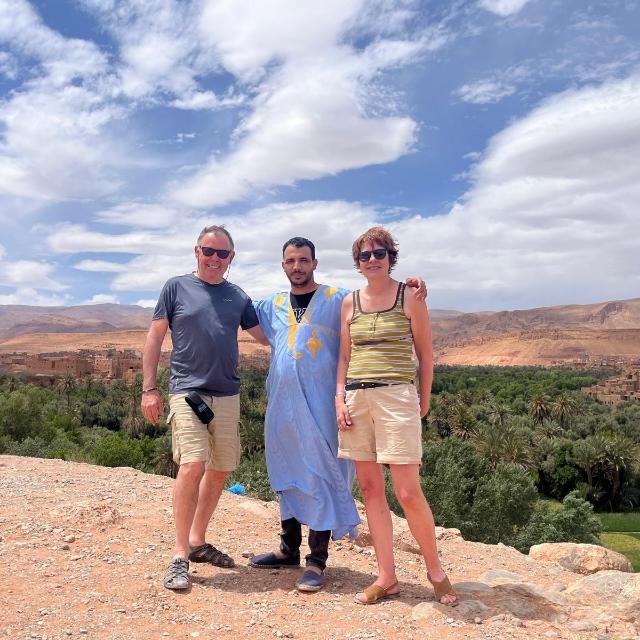
16. Family-Friendly Tours and Activities
Morocco is a family-friendly destination with activities and tours that cater to travelers of all ages. Kid-friendly attractions, such as the Majorelle Garden in Marrakech and the Oasiria Water Park, offer fun and educational experiences for children.
Family-focused tours and accommodations are available throughout the country, offering tailored experiences that ensure everyone in the family has a great time. Many hotels and resorts offer family-friendly amenities, such as children’s clubs, pools, and activities.
Tips for traveling with children include packing appropriate clothing and supplies, planning activities that cater to different interests, and being flexible with your itinerary. Morocco’s diverse landscapes and attractions offer something for everyone, making it a great destination for family vacations.
17. Shopping and Souvenirs in Morocco
Shopping in Morocco is an adventure in itself, with vibrant markets offering unique and traditional souvenirs. The best markets and souks are found in cities like Marrakech, Fez, and Essaouira. These bustling markets are filled with artisans selling handmade goods such as pottery, textiles, jewelry, and leather products.
Traditional Moroccan crafts, such as carpets, ceramics, and metalwork, make for great souvenirs and gifts. Bargaining is a common practice in Moroccan markets, and haggling over prices can be a fun and engaging experience. Be sure to practice good etiquette and remain respectful during negotiations.
Visiting these markets and interacting with local craftsmen provides a chance to learn about traditional Moroccan craftsmanship and support local artisans. Whether you’re looking for a unique piece of art, a traditional carpet, or a handmade piece of jewelry, Morocco’s markets have something for everyone.
18. Photography Tours and Scenic Spots
Capture the beauty of Morocco with photography tours that guide you to the most picturesque and scenic locations. Morocco’s diverse landscapes, from the Sahara Desert to the Atlas Mountains, provide endless opportunities for stunning photographs.
Top spots for photography include the blue streets of Chefchaouen, the sand dunes of the Sahara, the historic medinas of Fez and Marrakech, and the coastal views of Essaouira. These locations offer a variety of scenes and subjects, from vibrant markets and ancient architecture to breathtaking natural landscapes.
Tips for taking great photos include using natural light, experimenting with different angles, and capturing the local culture and daily life. Photography tours and workshops are available throughout the country, providing guidance and instruction for photographers of all skill levels.
19. Luxury Moroccan Tours and Experiences
Indulge in the finest luxury tours and experiences Morocco has to offer, from exclusive accommodations to personalized services. Luxury riads and
resorts provide opulent settings with top-notch amenities, ensuring a comfortable and lavish stay.
Private tours and exclusive experiences are available, offering personalized itineraries and services tailored to your preferences. Whether you’re interested in a private guided tour of the medinas, a hot air balloon ride over the desert, or a luxury yacht cruise along the coast, there are plenty of options to choose from.
High-end dining experiences and gourmet cuisine are also part of the luxury offerings in Morocco. Many luxury hotels and resorts feature fine dining restaurants that serve traditional Moroccan dishes as well as international cuisine. For a truly unique experience, consider a private dining experience in a traditional Berber tent in the Sahara Desert.
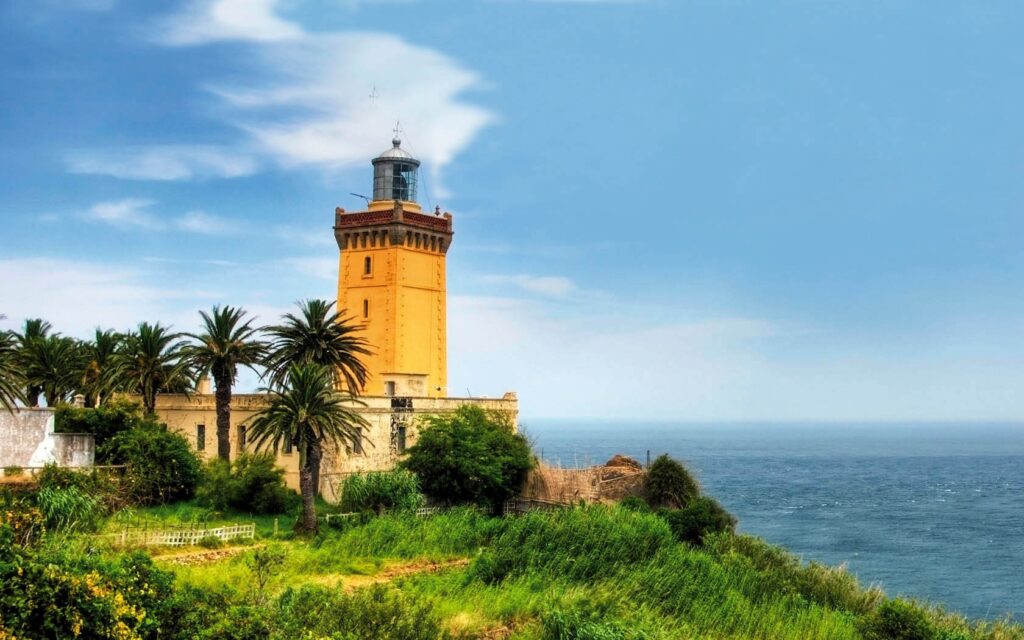
20. Safety and Travel Tips for Morocco
Ensuring your safety and comfort during your Moroccan tour is essential for an enjoyable experience. Morocco is generally a safe country for tourists, but it’s important to take basic precautions. Be aware of your surroundings, especially in crowded areas like markets and tourist attractions. Keep your belongings secure and avoid displaying valuable items.
Health and safety considerations include staying hydrated, especially in hot weather, and using sun protection. It’s also a good idea to carry a basic first aid kit and any necessary medications.
Travel tips for a smooth trip include learning a few basic phrases in Arabic or French, the two main languages spoken in Morocco. This can help you navigate and communicate more easily. It’s also helpful to familiarize yourself with local customs and etiquette, such as dressing modestly and being respectful during religious practices.
Conclusion: Embrace the Magic of Moroccan Tours
Embark on a journey like no other with Moroccan tours that promise unforgettable experiences and lasting memories. From the bustling souks of Marrakech to the serene sands of the Sahara, Morocco’s diverse landscapes and rich cultural heritage offer something for every traveler. Whether you’re seeking adventure, relaxation, or a deep cultural immersion, Morocco has it all. At Your Tour Morocco, we are dedicated to providing you with the best possible tour experience, ensuring that your visit to this enchanting country is nothing short of magical.
15 Frequently Asked Questions (FAQ)
What is the best time to visit Morocco?
Spring and Fall
The best time to visit Morocco is during the spring (March to May) and fall (September to November) when the weather is mild and pleasant. During these seasons, you can enjoy outdoor activities without the extreme temperatures of summer or the chilly nights of winter. Spring is particularly beautiful with blooming flowers and lush landscapes, while fall offers a comfortable climate ideal for exploring both cities and natural sites.
Is Morocco safe for tourists?
General Safety
Yes, Morocco is generally safe for tourists. The country takes significant measures to ensure the safety of visitors, especially in tourist areas. However, it’s always important to take basic precautions. Be aware of your surroundings, especially in crowded places like markets and festivals. Keep an eye on your belongings to avoid pickpocketing.
Local Etiquette
Understanding and respecting local customs can also enhance your safety. Dress modestly, especially when visiting religious sites, and be respectful of local traditions and practices. This respect will not only ensure your safety but also enrich your travel experience.
What should I pack for a Moroccan tour?
Essential Clothing and Gear
Pack comfortable clothing suitable for the weather. In the summer, light, breathable fabrics are ideal. In the winter, layers are essential as temperatures can drop significantly at night. A hat, sunscreen, and sunglasses are crucial for protection against the strong sun.
Modest Attire
Remember to pack modest attire for visiting religious sites. Women should bring scarves to cover their heads if needed. Comfortable walking shoes are a must for exploring the medinas and other attractions.
Additional Items
Other useful items include a basic first aid kit, any personal medications, a reusable water bottle, and a small daypack for daily excursions.
Do I need a visa to visit Morocco?
Visa Requirements
It depends on your nationality. Many nationalities can enter Morocco visa-free for up to 90 days. This includes travelers from the USA, Canada, the UK, Australia, and most European countries.
Checking Requirements
It’s important to check with the Moroccan consulate or embassy in your country for specific visa requirements. Always ensure your passport is valid for at least six months beyond your planned departure date from Morocco.
What currency is used in Morocco?
Moroccan Dirham
The currency used in Morocco is the Moroccan Dirham (MAD). It’s advisable to exchange some money before arriving or use ATMs available in major cities and towns.
Payment Methods
While credit cards are accepted in many hotels, restaurants, and shops in major cities, cash is often preferred in markets and smaller establishments. It’s a good idea to carry some cash, especially when traveling to rural areas.
Is bargaining common in Moroccan markets?
Yes, Bargaining is Expected
Bargaining is a common practice in Moroccan markets (souks). It’s an integral part of the shopping experience and can be quite fun.
How to Bargain
Start by offering about half of the asking price and negotiate from there. Always be polite and respectful during the process. A smile and a friendly demeanor can go a long way in securing a good deal.
What languages are spoken in Morocco?
Arabic and French
The main languages spoken in Morocco are Arabic and French. Moroccan Arabic (Darija) is the most widely spoken, while French is used in business, government, and education.
English Proficiency
English is also widely understood in tourist areas, hotels, and restaurants, especially among younger people and those working in the tourism industry.
Can I use credit cards in Morocco?
Widespread Acceptance
Credit cards are accepted in most hotels, restaurants, and shops in major cities like Marrakech, Casablanca, and Rabat.
Cash Preferences
However, cash is preferred in markets, small shops, and rural areas. It’s a good idea to have some cash on hand for these situations. ATMs are widely available for withdrawing local currency.
What is a traditional Moroccan dish to try?
A traditional Moroccan dish to try is Tagine, a slow-cooked stew made with meat, vegetables, and aromatic spices. The dish is named after the earthenware pot in which it is cooked, which helps retain the flavors and moisture.
Other Dishes
Other must-try dishes include Couscous, often served with vegetables and meat, and Pastilla, a savory-sweet pastry filled with pigeon or chicken, almonds, and spices. Exploring Moroccan cuisine is a delightful journey through the country’s rich culinary heritage.
Are there any cultural customs I should be aware of?
Dress Modestly
Yes, it’s important to dress modestly, especially in rural areas and when visiting religious sites.
Greetings and Etiquette
Greeting with a handshake and using your right hand for eating are common customs. It’s also polite to remove your shoes when entering someone’s home. Being respectful of these customs will enhance your experience and interactions with locals.
Can I drink tap water in Morocco?
Bottled or Filtered Water Recommended
It’s advisable to drink bottled or filtered water in Morocco to avoid stomach issues. Tap water is generally safe for brushing teeth and showering, but for drinking, it’s best to stick with bottled water.
Staying Hydrated
Staying hydrated is especially important in Morocco’s hot climate. Always carry a bottle of water with you, particularly when exploring outdoor sites or traveling in the desert.
What are the must-see historical sites in Morocco?
Top Historical Sites
Must-see historical sites include the medina of Fez, a UNESCO World Heritage site known for its medieval architecture and vibrant souks. The Hassan II Mosque in Casablanca, one of the largest mosques in the world, is another highlight.
Roman Ruins
The Roman ruins of Volubilis, with its well-preserved mosaics and ancient structures, offer a glimpse into Morocco’s Roman past. Each of these sites provides a unique insight into the country’s rich history and cultural heritage.
Is it customary to tip in Morocco?
Yes, Tipping is Customary
Tipping is customary in Morocco. A small tip for good service is appreciated in restaurants, hotels, and for guides.
Tipping Etiquette
In restaurants, it’s common to leave a tip of around 10% of the bill. For hotel staff and tour guides, tipping a few dirhams for their services is a nice gesture. Always tip in cash, as it is the preferred method.
How can I experience the Moroccan desert?
Desert Experiences
You can experience the Moroccan desert through camel trekking, staying in desert camps, and 4×4 excursions in areas like Erg Chebbi and Erg Chigaga.
Unique Activities
These experiences often include stargazing, sandboarding, and visiting local Berber villages. Spending a night in a traditional desert camp is a highlight, offering a unique opportunity to immerse yourself in the serene beauty of the desert landscape.
What is the traditional Moroccan tea?
Mint Tea
The traditional Moroccan tea is mint tea, made with green tea, fresh mint leaves, and sugar. It’s a staple of Moroccan hospitality and is often served throughout the day.
Cultural Significance
Mint tea is more than just a beverage; it’s a symbol of Moroccan culture and hospitality. It is often enjoyed with friends and family, making it an integral part of social gatherings and daily life in Morocco.

